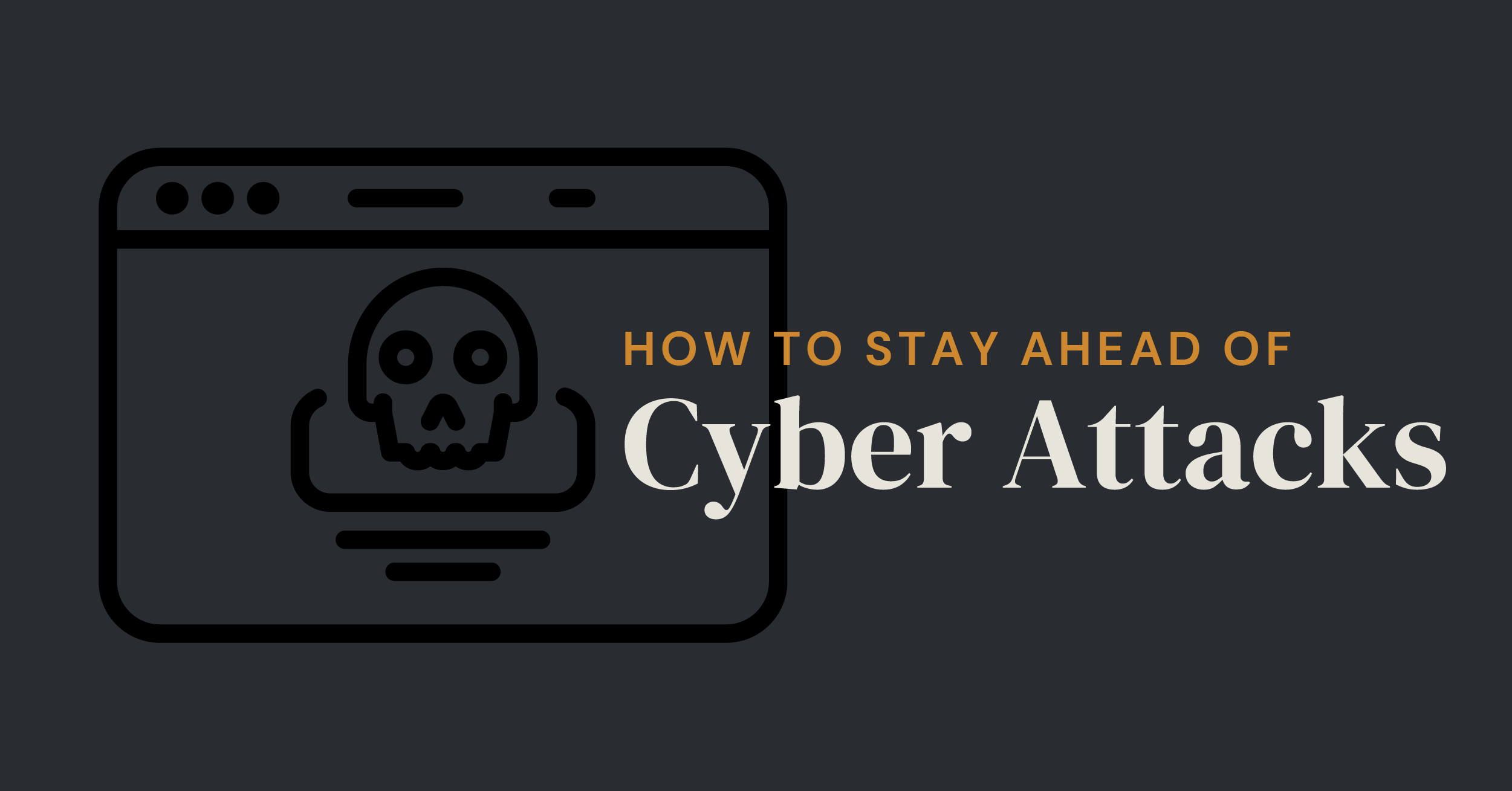BLOG How to Stay Ahead of Cyber Attacks
How to Stay Ahead of Cyber Attacks
POSTED BY Primitive | May 28, 2021

In today’s business world, almost everything we do is online. We interact with clients and potential customers, we make payment transactions, and we store data – lots and lots and lots of data.
So, with so much going on in the virtual world, it makes sense that the number of threats to our technological infrastructures increase by the day.
Even within the same month this blog is being released, the largest gasoline pipeline in the United States, the Colonial Pipeline, underwent a ransomware attack performed by Ransomware-as-a-Service (RaaS) cybercriminals, DarkSide.
This attack forced Colonial Pipeline to halt business, resulting in a temporary nationwide gas shortage and panic, and a payment of nearly $5M in ransom in return for a data decryption key.
As scary and unique as this sounds, a local Lubbock company, Betenbough Homes, was also on the receiving end of a Russian cyber attack similar to that of the Colonial Pipeline attack.
So, what does all this mean for you and your business? No business is immune to cyber attacks and it’s important to stay ahead of them.
Common cyber threats and cyber attacks
Phishing is when attackers lure unsuspecting victims into filling out forms with personal information (passwords, bank information, etc.). In 2020, phishing scams rose 220%, compared to the annual average, as a result of pandemic fears.
Malware is the term used to describe attacks made on a device or network to control the system and corrupt data. Spyware and malvertising are two branches of malware that infiltrate your device and feed personal data to a host, and online advertising that spreads malware, respectively.
Identity theft occurs when attackers stealthily obtain personal information to steal a victim’s finances or intellectual property.
Advanced persistent threats occur when attackers are in a system without detection. These criminals are typically well-funded and highly educated.
DDoS (Distributed denial of service) attackers disrupt regular traffic to your website by flooding the targeted server with traffic designed to make the website inoperable.
How to stay ahead of cyber attacks
Perform regular risk assessments
Truth be told, there are certain businesses who happen to be highly targeted and more valuable to attacks. There are also certain businesses who have higher-risk data in some parts of their organization compared to others.
Knowing where you’re the most vulnerable is key in preventing cyber security threats and attacks. While locking down your IP address to allow only verified access is one way to mitigate risk, it’s not a guaranteed failsafe by any stretch of the word.
Conducting regularly scheduled risk assessments by a professional will help you identify vulnerabilities in your network while also magnifying certain conditions needed to infiltrate and exploit them.
When your team becomes aware of certain exposures, you can be proactive in remedying them and keeping your network safe.
Create a plan
Will you shut down your entire network? Will you stop all transactions? Will you notify customers? How will you recover any lost or stolen information?
No network or system is 100% secure from cyber attacks and security threats, so having procedures and policies in place is critical to ensuring your business doesn’t potentially lose more revenue, or arguably worse, a hard-earned reputation.
The FCC even offers a cybersecurity planning tool to get a plan started and in place for your organization.
Use HTTPs
HTTPs is the abbreviation for Hyper Text Transfer Protocol Secure and is the protocol used to secure communication between a browser and a server. Not to be confused with HTTP, the added “s” that indicates “secure” means the information communicated between the browser and server is encrypted, whereas, communication with HTTP, is not.
Since websites are just shy of being the official point of all communication for any modern brand, it’s critical to both your organization and your business base to establish encrypted communication. This way, even if a hacker is able to intercept information between the server and browser, they can’t utilize it.
In light of living in an era of increasing security threats, Primitive took it upon themselves to create a state-of-the-art, safe and secure CMS – Bind.
Our custom CMS not only guarantees lightning fast speeds on a serverless network, but every site built with Bind promises the inclusion of HTTPS along with an award-winning network provider that blocks 72 billion threats per day.
To schedule a free meeting to explore the benefits of Bind, click here.
Train and educate your team
Your team has access to critical information, and each day they’re utilizing that information to access important data.
But they’re also subject to forwarding a fun email or perhaps even loving a good meme like the rest of us, and downloading it to their desktop.
Taking a few extra moments each month or quarter to update your team on cybersecurity best practices, or components to be on the lookout for, could make all the difference in keeping your valuable data secure.
A few signs to educate your employee on are:
- Minor spelling, punctuation, grammar, or jargon mistakes
- Fonts and color palettes that seem “off”
- Blurry email signatures
- Misidentification of employees, their departments, and their roles.
- Emails and landing pages with odd formatting
With recent cyber attacks in mind, staying ahead of them and protecting your software or website so you aren’t a victim is crucial. Having a multi-layered approach to keeping your organization secure is important now more than ever.
When was the last time you performed a security audit on your website?
SHARE THIS POST:

About the writer, Primitive
The team behind On the Dot. is made up of creatives, strategists, and developers who give a damn. At Primitive, we craft digital solutions that help businesses grow from brand to backend. Every insight we share is backed by strategy, driven by results, and built to move your business forward.